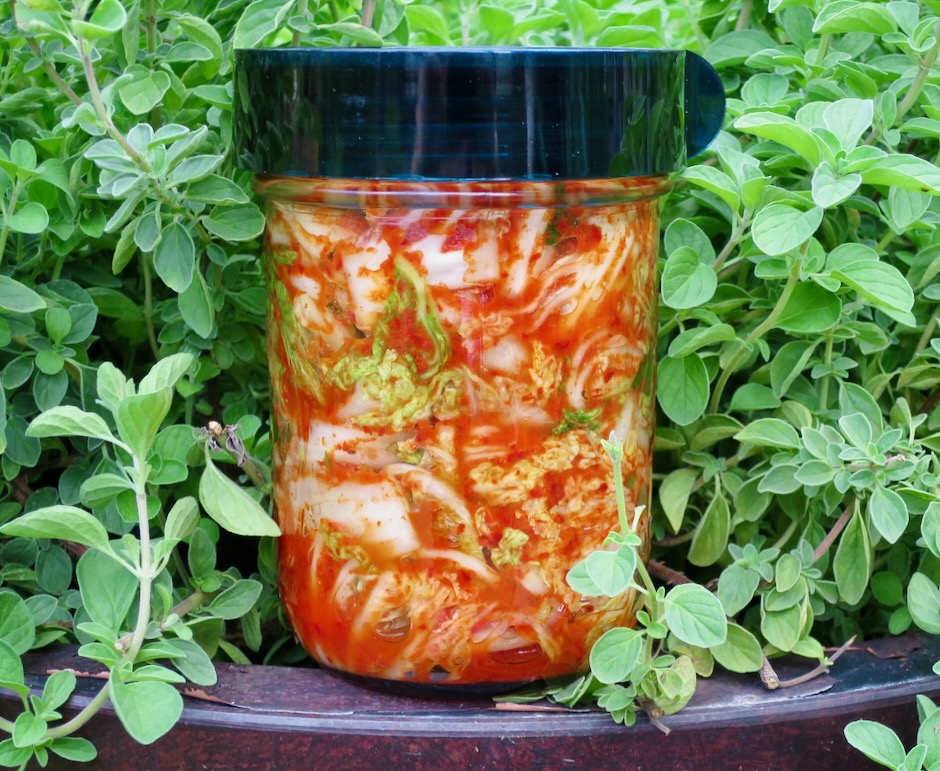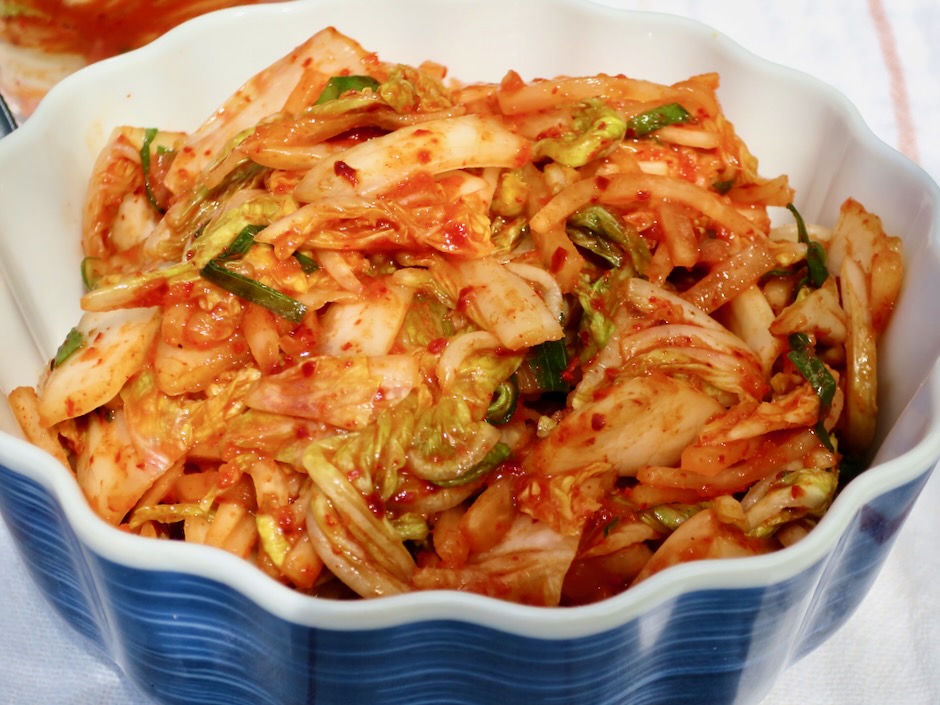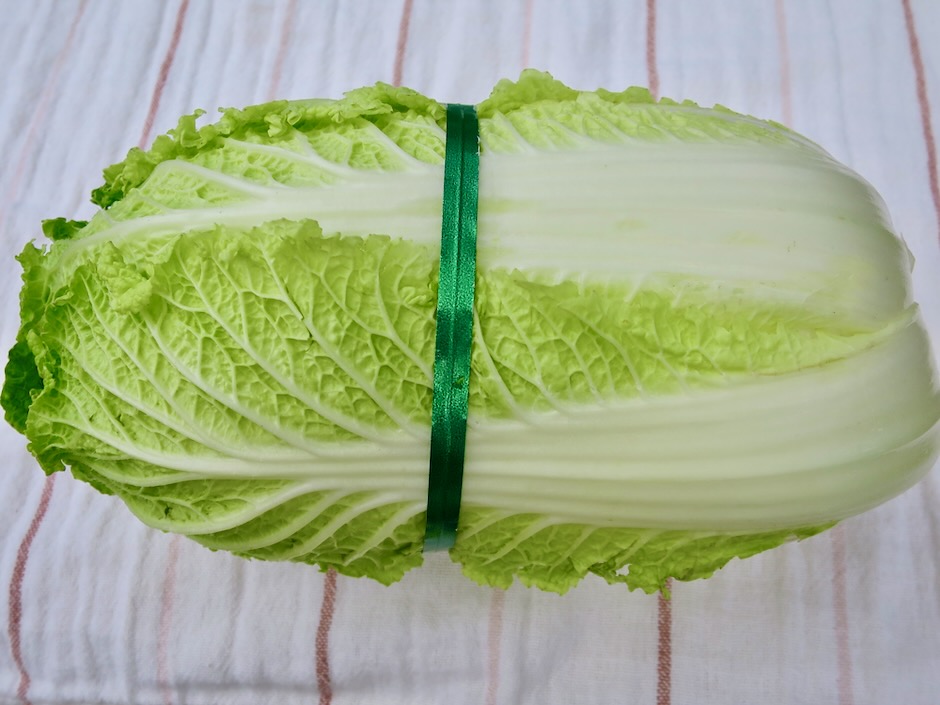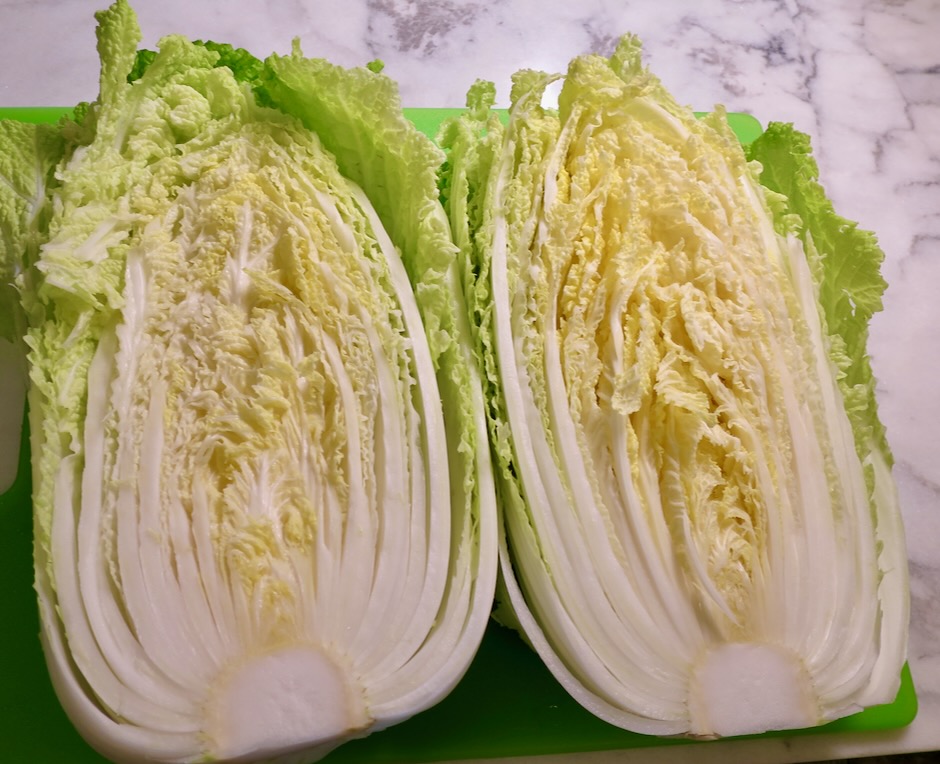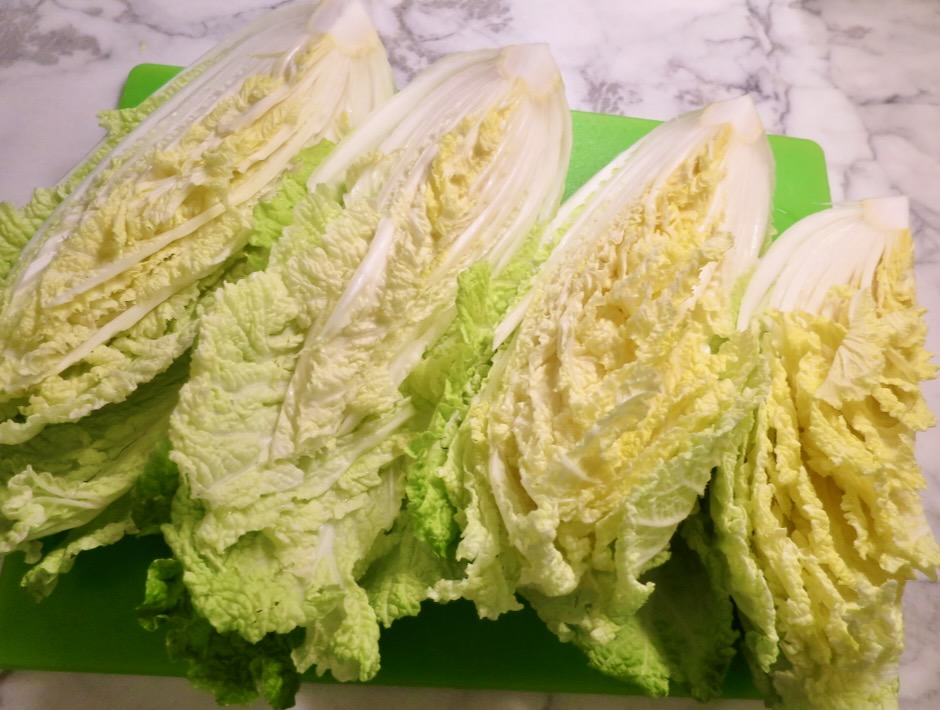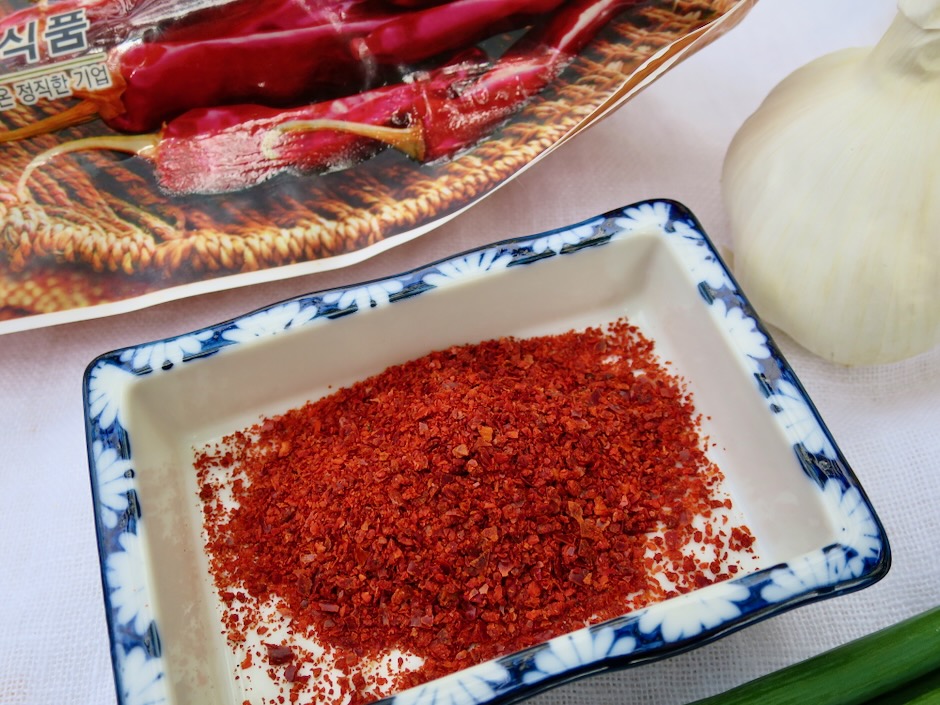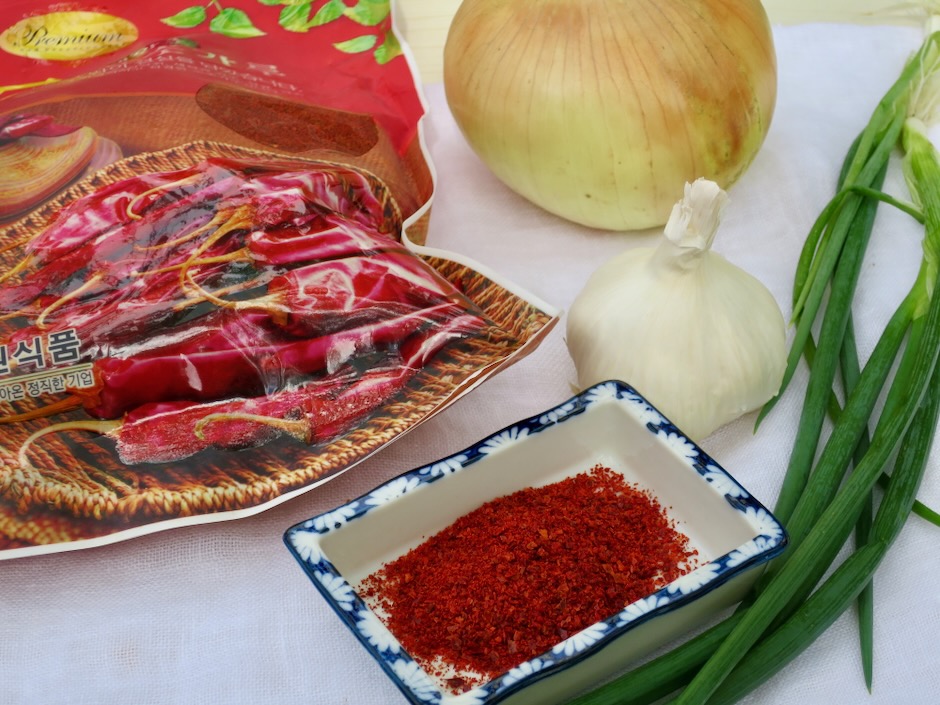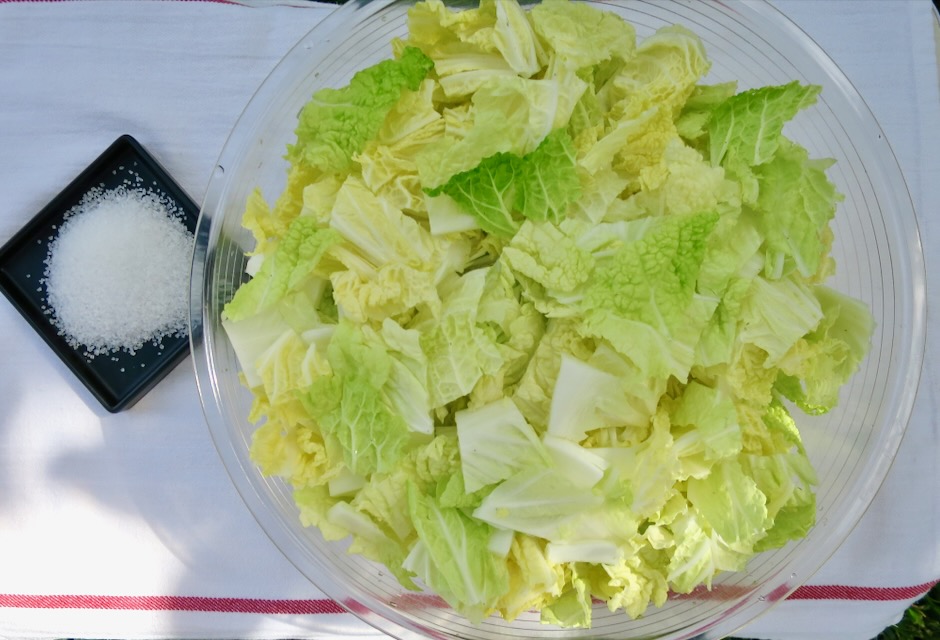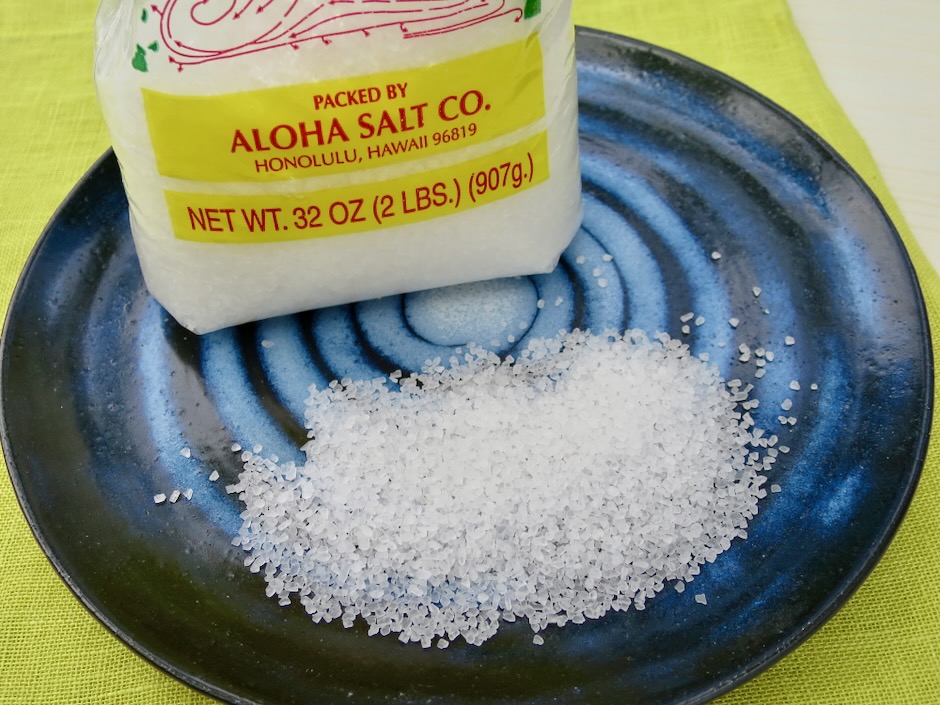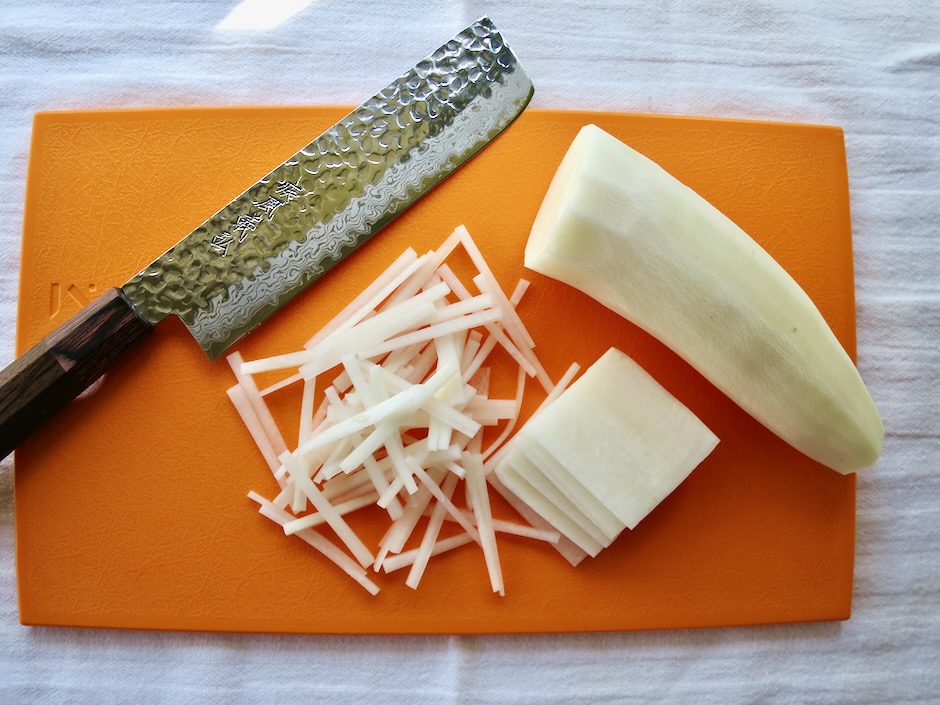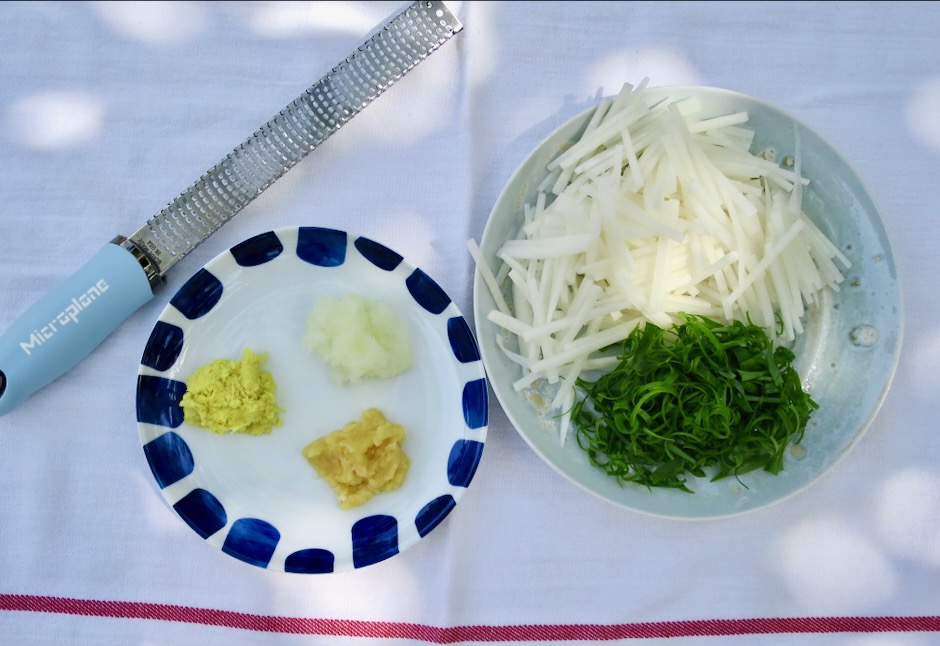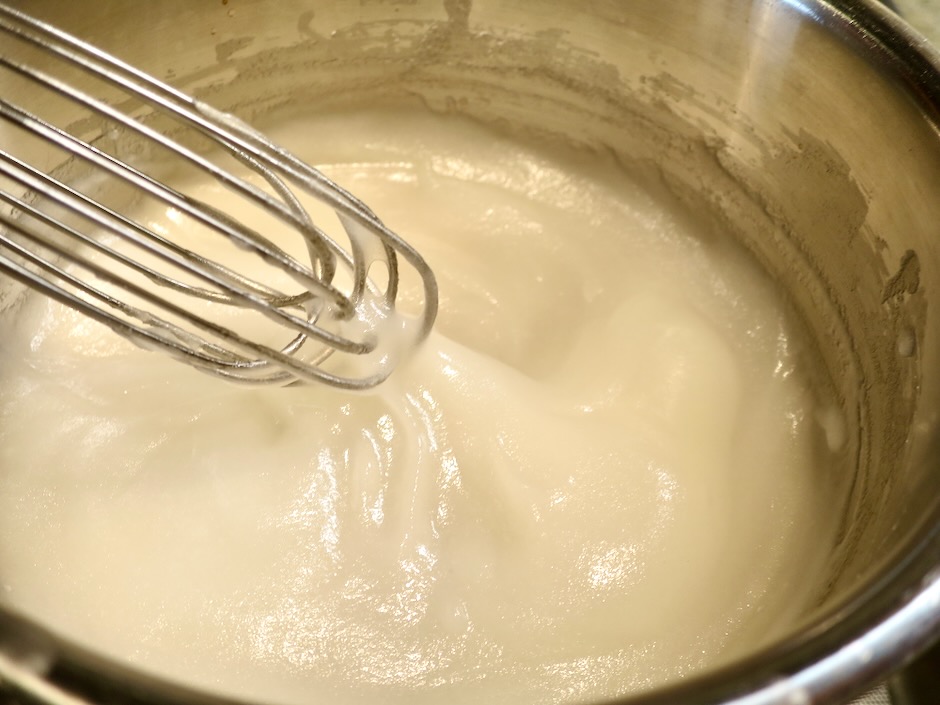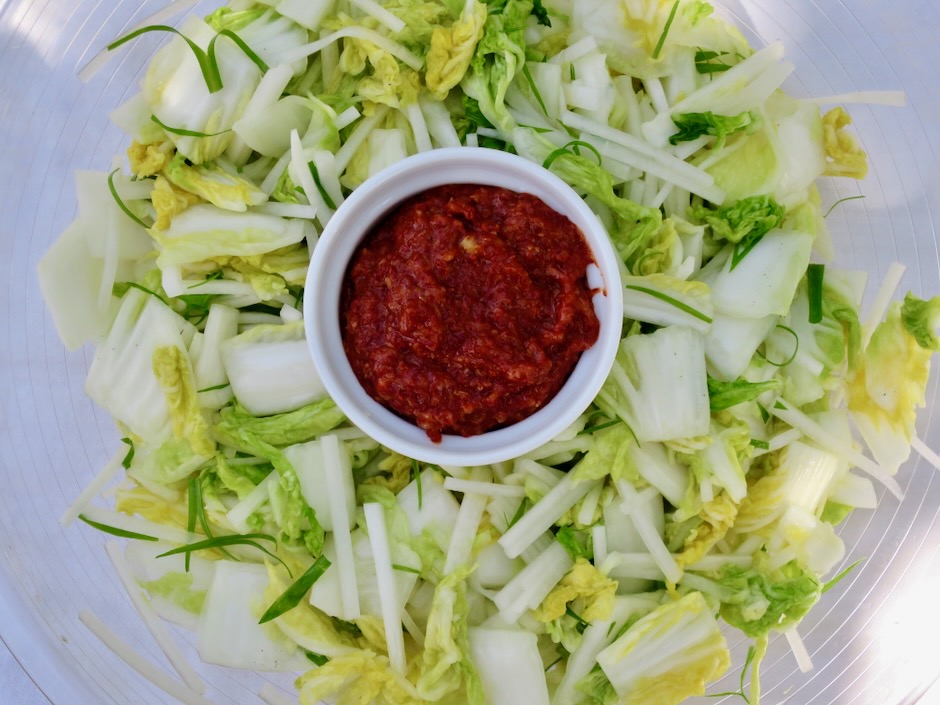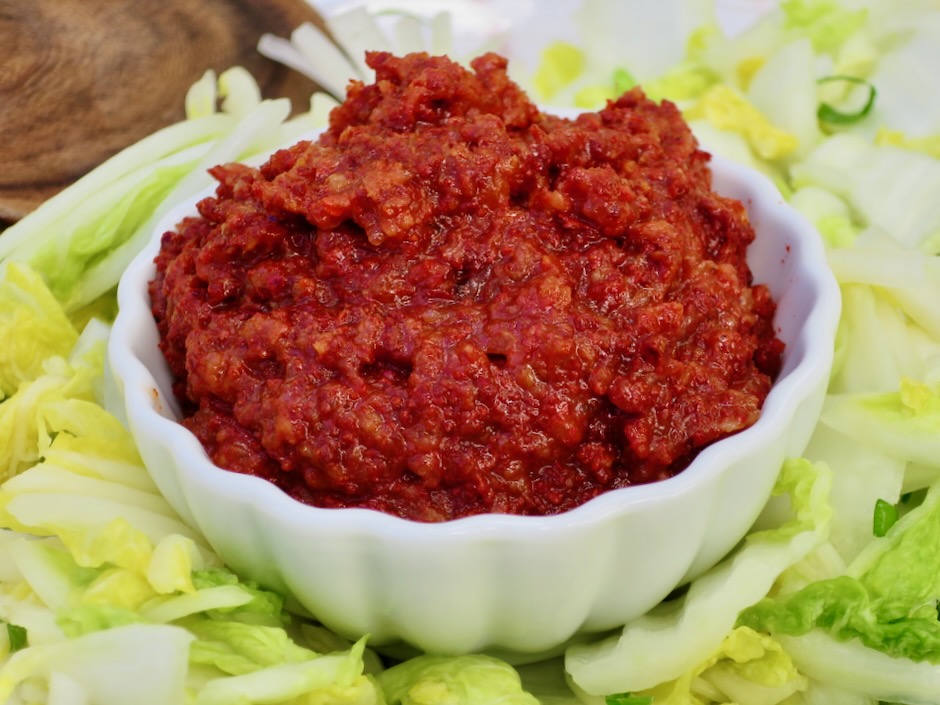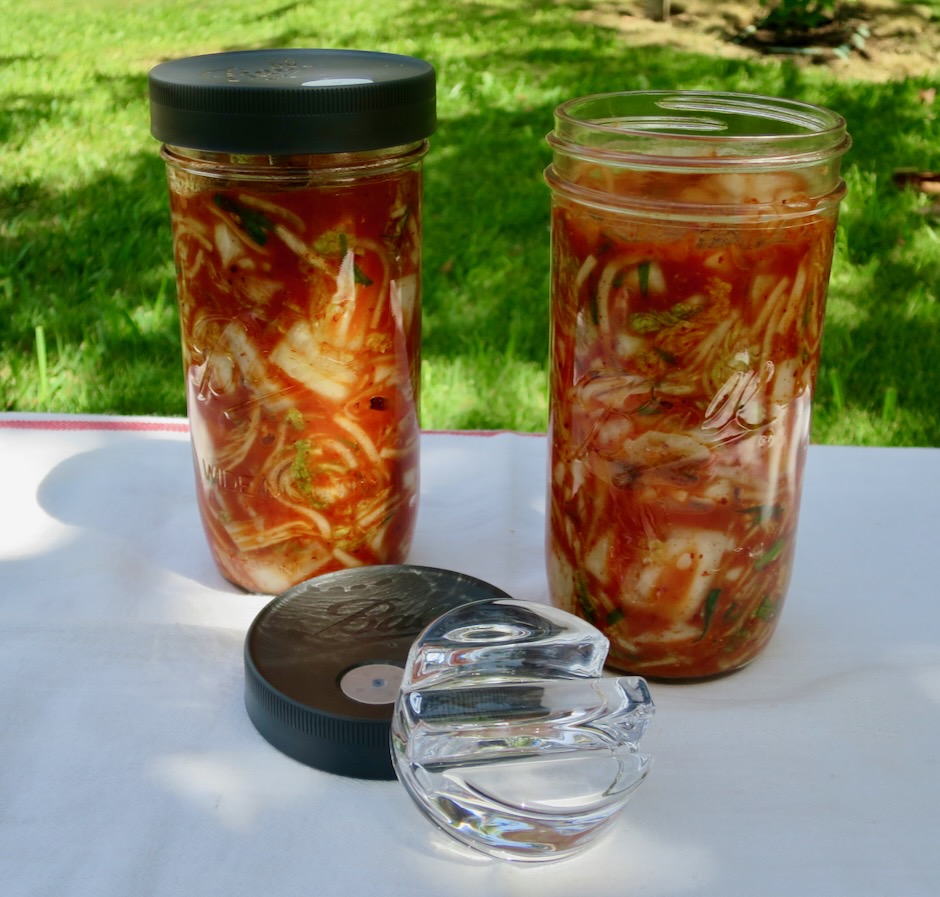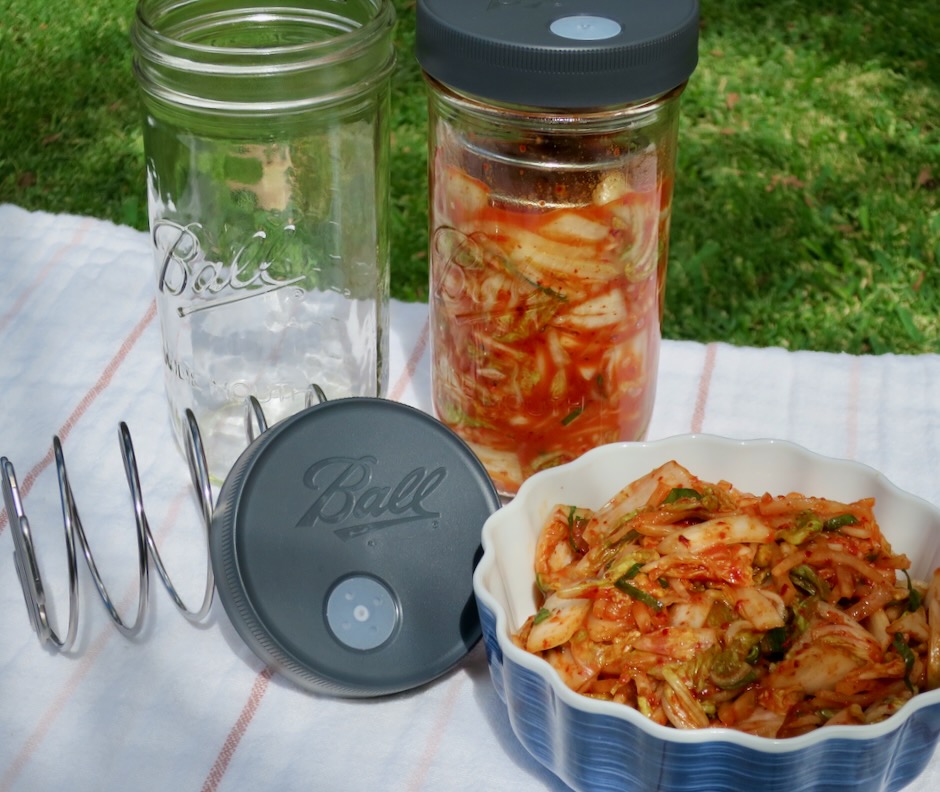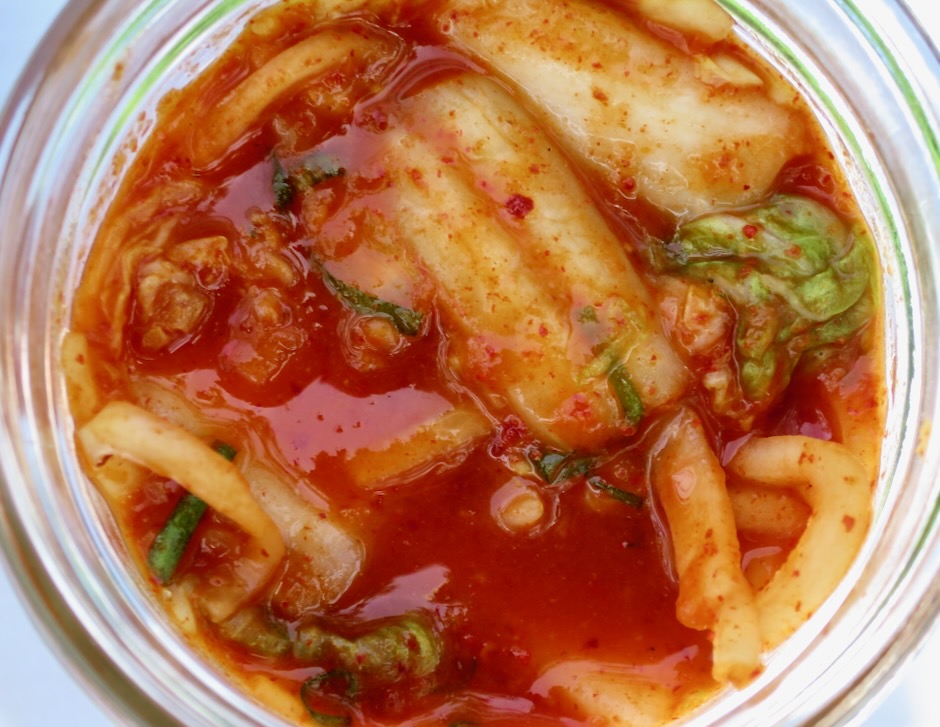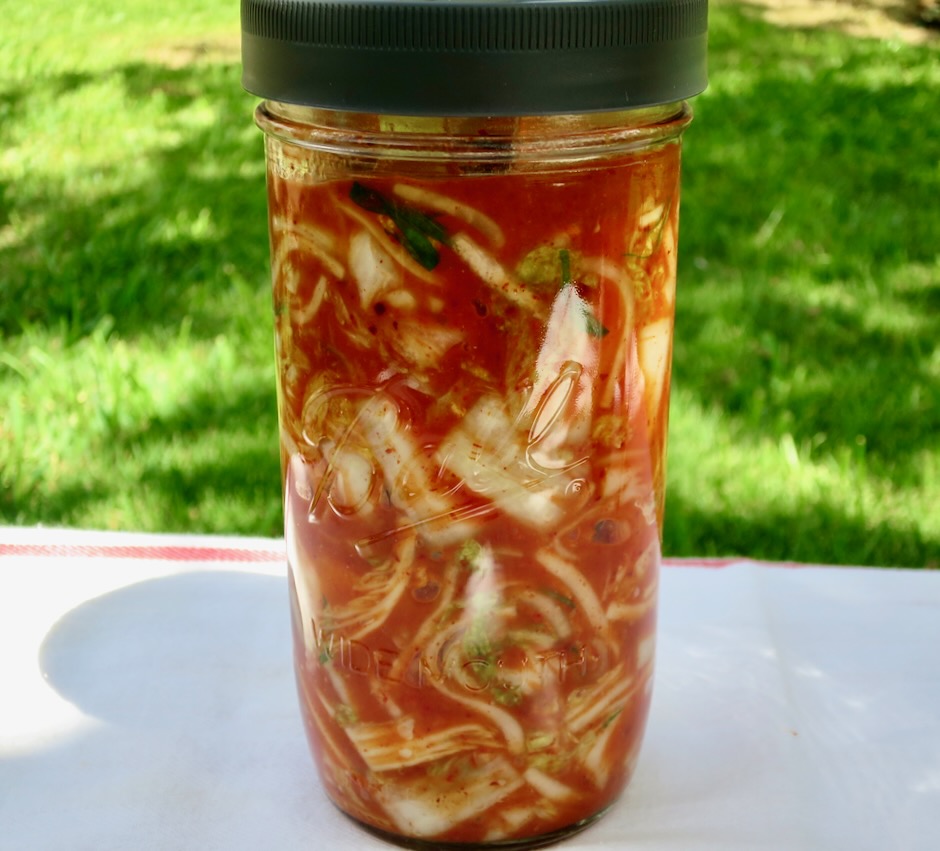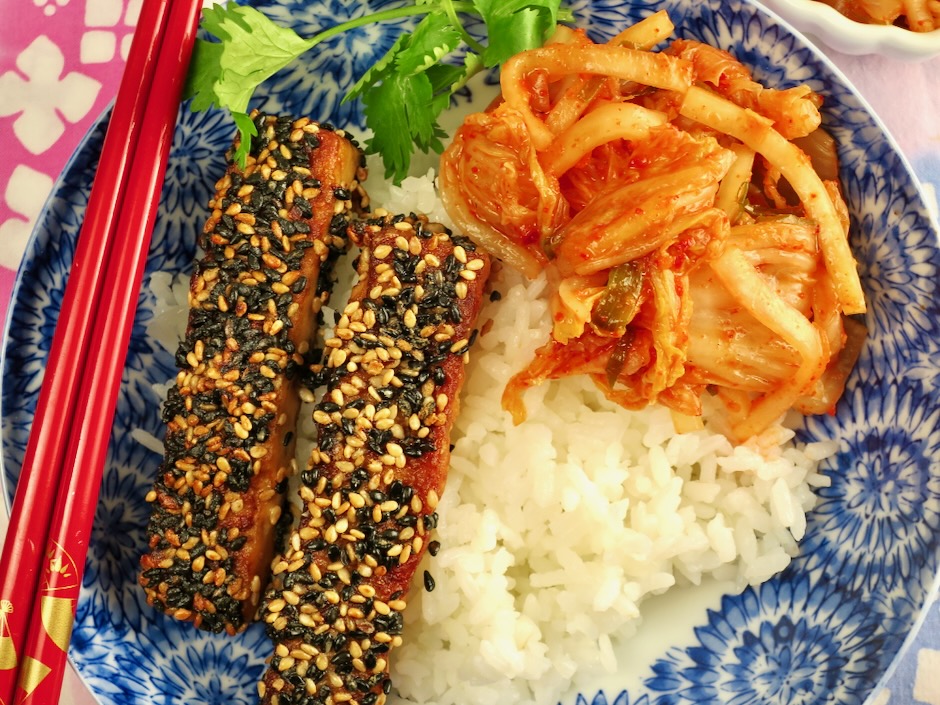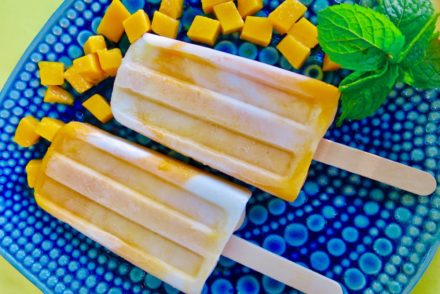I’ve had a keen interest in homemade kimchi for sometime now. I attempted to make it before with ingredients that varied slightly, but they weren’t keepers. I finally tried again, and this time the kimchi was delicious. There are so many variations of kimchi, yet the main ingredients never change: Won bok cabbage, salt, garlic and gochugaru. Additional ingredients such as thin strips of daikon radish and carrots, grated ginger, green onions, and a bit of sugar can be added to the mix. With so many options, the kimchi you make will be your own unique recipe.
Start off with head of crispy won bok cabbage. The outer leaves should be rinsed well, or removed if damaged.
Slice the won bok into quarters and remove the core.
I bought a large bag of gochugaru from H Mart on Oahu. You can easily purchase this online. Gochugaru has a gorgeous deep red color and gives the kimchi its beautiful red hue.
The chopped cabbage is tossed with water and coarse salt. It will shrink dramatically by the end of this step.
I’ve had this bag of salt for years. I prefer to use this medium grain salt. I read that there is a Korean version of this so I will look out for it the next time I’m at H Mart.
Thin strips of daikon are a nice addition to the won bok. It has its own unique flavor and adds a bit of crunch to the kimchi.
The garlic, ginger and onion are grated very finely. I highly recommend the Microplane to grate the garlic and ginger. I use a fine grater for the onion as the Microplane is too fine (you’ll end up with onion water!).
After studying different preparations for kimchi, I noticed that some recipes make a kimchi paste as they refer to it, by heating mochiko flour (sweet rice flour) with water, then adding a bit of sugar. The mixture is cooled completely before the seasonings are mixed in. This method is a winner and I will always use it when making kimchi. The grated onion, garlic, ginger and gochugaru are mixed into the paste. Once the cabbage has been rinsed and drained, the kimchi seasoning paste is mixed in along with the daikon and green onions. The paste coats the vegetables thoroughly ensuring that they are all well seasoned. It is a brilliant idea.
If you have fermenting weights or springs it helps to keep the cabbage submerged under the liquid. Otherwise, press the cabbage down firmly with a spoon.
I never thought I would say that kimchi is beautiful but if you make your own, it truly is. There is no kimchi like this available at stores where I live. It’s fresh, spicy, and delicious.
Kimchi is delicious served with rice and sesame tofu.
- 1 head Napa cabbage (about 2½ pounds) bottom trimmed, quartered, core removed, leaves cut into 2-inch pieces
- ¼ cup medium grain salt (I use Pacific Brand by Aloha Salt Co.)
- 1 cup distilled or purified water
- Kimchi paste: ½ cup distilled or purified water
- 1 tablespoon mochiko rice flour
- 1 tablespoon granulated sugar
- Vegetables: ½ small bundle green onions, julienned
- ¾ cup daikon radish cut into 2-inch long matchsticks (optional)
- ¼ medium sweet onion finely grated
- 4 cloves garlic (medium size) peeled and finely grated
- 1 2-inch piece ginger, peeled and finely grated
- ¼ cup gochugaru (Korean red pepper)
- Place cut cabbage in a large, wide bowl. Mix salt with 1 cup water (distilled or filtered). Pour salt water over the cabbage and toss well (I use food-safe disposable gloves). Not all of the salt will have dissolved but that's OK, just mix the salt in with the cabbage and water. Cover the bowl and set aside for 1½ hours, tossing a few times.
- Meanwhile, whisk ½ cup water with mochiko flour in a small saucepan over medium heat, stirring constantly. Once the mixture begins to thicken and bubble (pudding consistency) add the sugar and whisk until combined. Remove from the burner, transfer kimchi paste to a bowl and let cool completely. Once kimchi paste has cooled, measure out 4 tablespoons and mix in grated onion, garlic, and ginger. Add gochugaru and mix thoroughly, adding more paste as needed.
- Drain cabbage in a colander and rinse under cool water to remove some of the salt. I give mine a fairly quick rinse making sure not to remove all of the salt. Drain and add back to the large bowl. Toss in daikon if using, and green onions. With food-safe gloves or clean hands, mix in kimchi seasoning paste and toss to coat the vegetables well. Transfer to clean quart jars leaving at least 2-inch headspace. Use fermenting springs or glass weights and lids if you have them. Otherwise press down on the kimchi firmly with a spoon so it is packed tightly. Cover with a lid and set aside away from the sun for 24 hours before refrigerating. This will allow enough time for fermentation to begin. You may leave the kimchi out at room temperature for another day if you prefer a more sour flavor. Taste the kimchi to see if the flavor is just right for you. The kimchi will continue to ferment very slowly when kept in the refrigerator. Kimchi will keep well in the refrigerator for months, if you can make it last that long.

